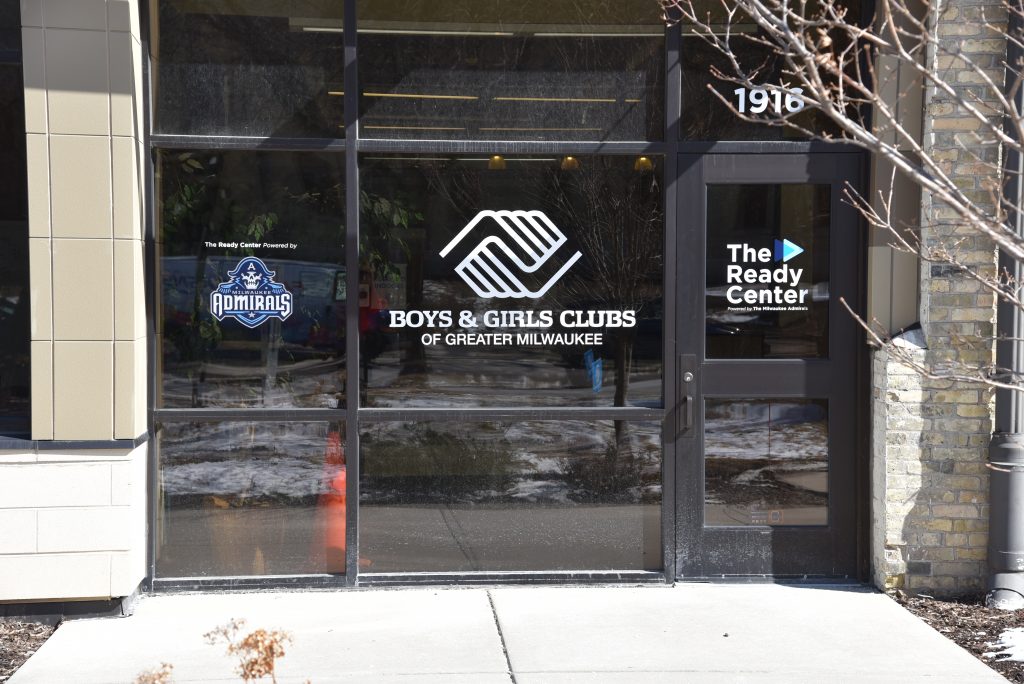Bradley Foundation Has Become Less Local
Much less money for Wisconsin, more board members from outside state.
You might call it the myth of Harry Bradley.
Liberals often like to note that the co-founder of the Allen Bradley company was a member of the John Birch Society and donated to right-wing groups. Conservatives who have run the Lynde and Harry Bradley Foundation have suggested the foundation operates in a way that preserves “the principles Harry believed in,” as the foundation’s first leader, I. Andrew Rader explained it.
Together, both sides reinforce the same story, that the foundation, whose huge assets came from the sale of the Allen-Bradley company in 1985, is living up to the legacy of Harry Bradley with its massive giving to conservative causes and groups across the country.
Except the story isn’t true.
The foundation is the successor to the old Allen-Bradley corporate foundation, which Harry helped establish and determine what it would fund. And the foundation overwhelmingly aimed to make Wisconsin, and especially Milwaukee a better place, with donations to metro-area education, health care, arts and youth groups, among other causes.
As Peg Bradley once said of her husband, “His love was Milwaukee, you know, and Allen Bradley. That’s all he cared about.”
Even after Harry’s death in 1965, the corporate foundation continued funding mostly Milwaukee groups. As Rader told me for a story in Milwaukee Magazine in 1988, 80% of the funding went to local groups.
That changed significantly: Some 45 groups in the state funded by the corporate foundation got nothing in first three years of its successor foundation. But the new foundation was so huge it was giving at least 25 times more funding per year, so there were few complaints.
Those first three years 50% of the funding went to local and state groups, as the story reported. That included $12 million for private colleges in Wisconsin, $9 million to medical care providers and $6 million to the arts. This was in line with what the old corporate foundation had done: beginning under Harry it gave to a long list of private colleges, including the old Milwaukee-Downer, Milton, Beloit, Ripon, Carroll, Northland and especially the Milwaukee School of Engineering (MSOE).
But the percentage for Wisconsin began to go down as Michael Joyce, hired as the foundation’s president in 1985, helped push the foundation to become the nation’s largest funder of conservative policy making. Just 2.5% of funding by the corporate foundation had gone to the broad field of public affairs of any kind, as John Gurda estimated in his book, The Bradley Legacy, published by the foundation in 1992. That had hit 60% for the Bradley Foundation by 1990, with even some of the Wisconsin funding going to conservative policy making.
Still, it remained a very Wisconsin-based foundation. The original board of directors had 13 members of which just four, including Joyce, were from outside Wisconsin. Fifteen years later, in 2000, it had a 12-member board, with 4 members from outside Wisconsin, plus Joyce who had by then been living in metro Milwaukee for 15 years.
By the time Joyce retired from the job in 2001, the percent of funding going to Wisconsin groups had dropped to 37%, as I reported for MilwaukeeWorld.com. That 13% decline from the early years under Joyce made a huge difference, as Bradley was by then a $700 million foundation giving away about $40 million a year. It meant that Wisconsin got about $15 million a year, rather than the $20 million it would have gotten if 50% was funded within the state.
Then-Bradley board chairman Allen Taylor made it clear there would be no further reduction. “There’ll be no change in that [the percentage of funding going to Wisconsin]. This is a Wisconsin institution. It’s really important that that continue,” he told me.
But Taylor conceded he could not control what happens after he left the board. And under the leadership of Michael Grebe, who succeeded Joyce as president and served from 2002-2016, and his successor Rick Graber, the foundation has continued to become less local. Under their leadership, the foundation’s board, which had long had a big majority of Wisconsin members, has changed: today the majority, six of 11 board members, do not live in Wisconsin. One of them, Paul Clement, is a Wisconsin native but has been living on the East Coast for decades.
Less than a year after Graber became president, in April 2017, long-time, Milwaukee-based trustee David Uihlein suddenly quit the board, Urban Milwaukee reported. Sources said that Uihlein, as vice-chairman of the board, expected to be elevated to chairman when Dennis J. Kuester, another Milwaukeean, retired. But instead of Uihlein, the board chose to elevate relative newcomer James Arthur Pope, who had joined the board in 2014, to the position of chairman.
If the foundation truly was concerned about the legacy of Harry Bradley, why chase away his grandson, David Uihlein, whose family is responsible for the foundation’s wealth? Not to mention that Uihlein is a long-time philanthropist who shares his grandfather’s concern about funding and supporting Milwaukee institutions.
And why choose Pope, who is based in North Carolina, as chairman instead? Perhaps because Uihlein’s politics were too moderate and out of step with the increasingly radical politics of the Bradley Foundation, as reported by Urban Milwaukee. By contrast, Pope has extreme right-wing views and used his family foundation money to almost single-handedly turn North Carolina into a red state and to help bankroll a gerrymandering scheme the U.S. Supreme Court overturned as unconstitutional for targeting and reducing the impact of black voters with “almost surgical precision.”
As the board membership changed, so did its giving. The foundation, which by now has $992 million in assets, gave a total of $43.2 million in donations in 2021, with just $12 million or 27.5% going to groups in Wisconsin. In 2022 total giving was $49.6 million with $14.5 million or 29.2% going to Wisconsin. In 2023 total giving was $52.6 million and $14.4 million or 27% went to Wisconsin.
Had 50% of the funding gone to Wisconsin as in the foundation’s early years, the state would have gotten $26.2 million in donations, or nearly $12 million more in 2023. To look at it another way, the foundation gave about $13 million to Wisconsin in 1988; in real dollars that would be more than $34 million today.
As the local funding has declined, favorite causes of Harry Bradley and the corporate foundation have dropped by the wayside. The Bradley Foundation gave $12 million to private colleges over its first three years and less than $1 million over the last three years, a massive decline. Mostly notably, it has given no donations over the past four years to MSOE, a particular favorite in the days of Harry Bradley.
Another favorite under Harry was the Milwaukee Boys Club, now the Boys & Girls Club of Greater Milwaukee, which got no donations in the last four years.
But perhaps the most notable loser is the Milwaukee Art Museum which has gotten no donations since 2018. Some of its greatest works were donated to it by Peg Bradley and the Allen Bradley Foundation donated $500,000 for a new wing to help showcase the paintings.
For many years the Bradley Foundation had given generously to the art museum, MSOE and the Boys and Girls Club, giving millions since 1985. But as the foundation has reduced its local giving all three groups have been big losers.
The foundation did not respond to requests for comment from Urban Milwaukee, but there was one encouraging sign in the last year. In 2023, after six years under Pope, the board chose Patrick J. English, an executive with Milwaukee’s Fiduciary Management, to serve as chairman of the board. Will that have any impact on how much funding goes to the Milwaukee community to which Harry Bradley was so devoted? We’ll see.
If you think stories like this are important, become a member of Urban Milwaukee and help support real, independent journalism. Plus you get some cool added benefits.
Murphy's Law
-
Top Health Care Exec Paid $25.7 Million
 Dec 16th, 2025 by Bruce Murphy
Dec 16th, 2025 by Bruce Murphy
-
Milwaukee Mayor’s Power in Decline?
 Dec 10th, 2025 by Bruce Murphy
Dec 10th, 2025 by Bruce Murphy
-
Total Cost of Foxconn Is Rising
 Dec 8th, 2025 by Bruce Murphy
Dec 8th, 2025 by Bruce Murphy






















Thanks for this analysis. Does the foundation have a mission statement, or is everything just up to the board? The range of “philanthropy” has certainly strayed from the original focus.
Might it be time to review the original document and see what can be done legally and what can be done from a PR point of view We are better with them gone than still using the base of Wisconsin. That might even be an issue Again WHEN WILL WE FIGHT???
When will we fight for the children of Milwaukee It is basic that ALL school suspension traumatize those suspended!! It is simple and yet Urban Milwaukee nor the MJS are willing to call it out WHAT UP DOC??
The disrespect towards the Milwaukee Art Museum really stings. The collection established by Mrs. Bradley is one of the best things IN the museum. We have a building that attracts visitors from all over. The Bradley Foundation should realize that whether the state is red or blue…the art museum is there to inspire all.
MilwaukeeWorld com wow, been doing this for awhile! Was fascinating checking out old versions of the site on archive org